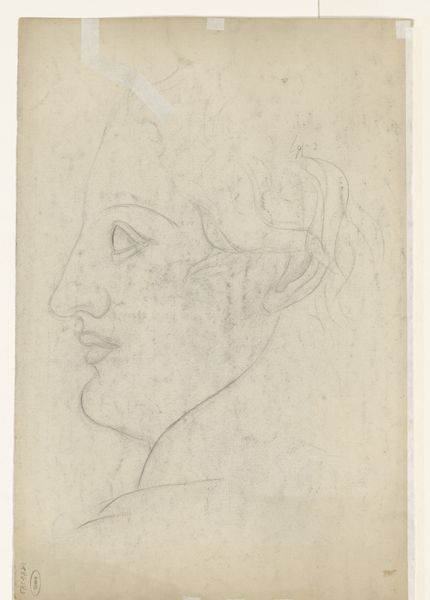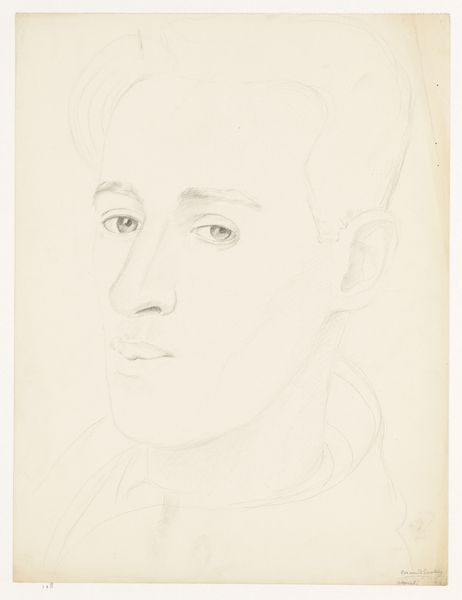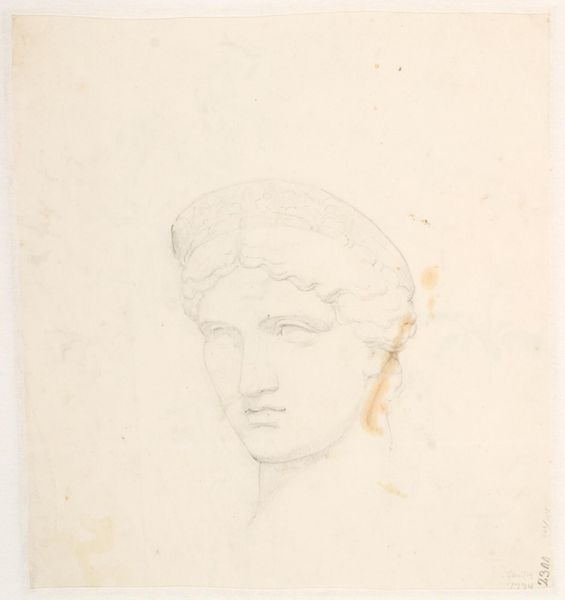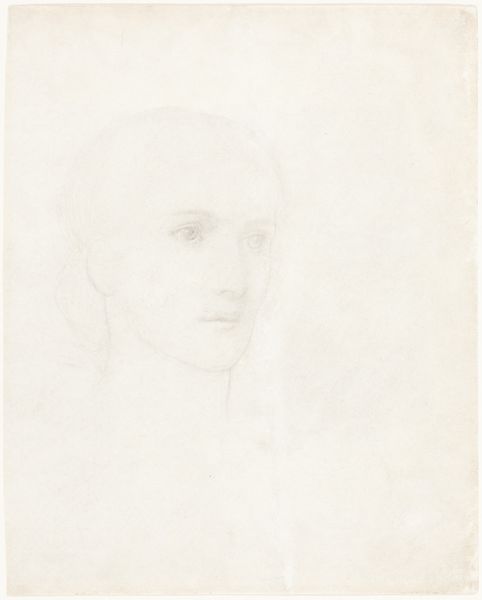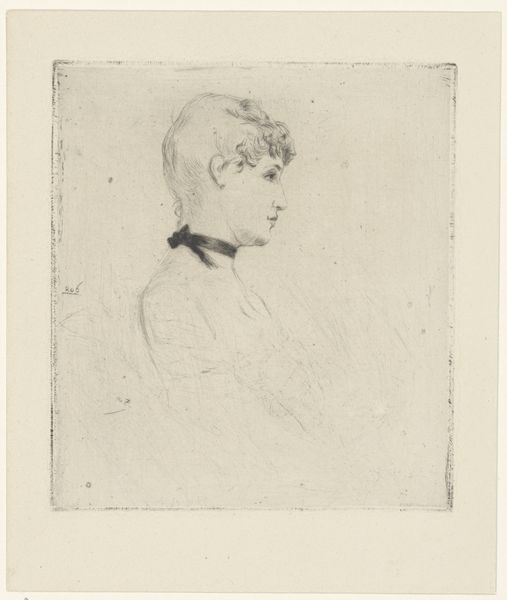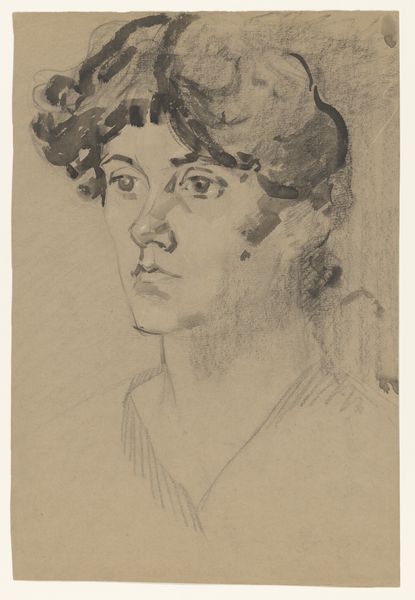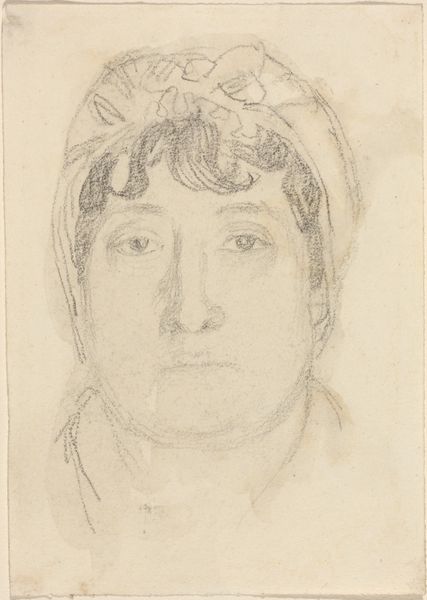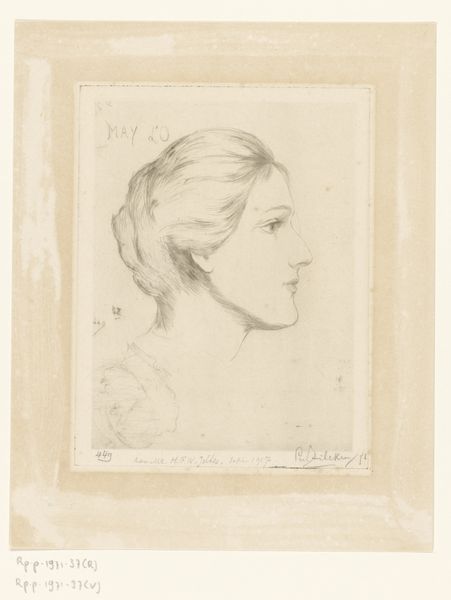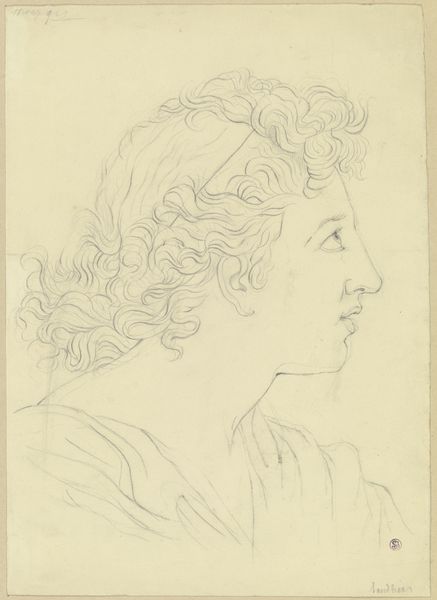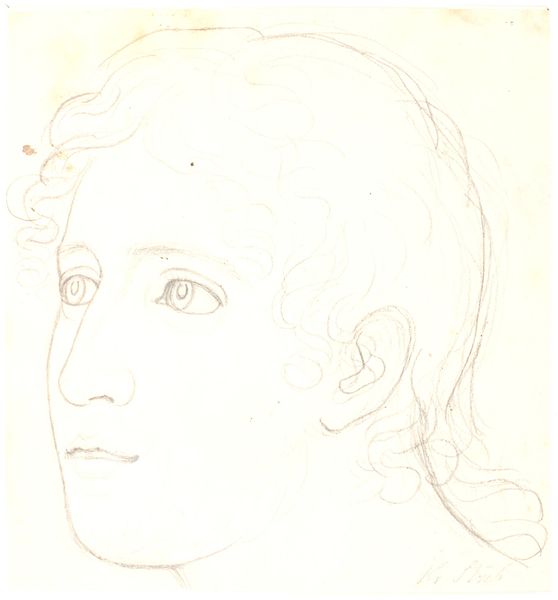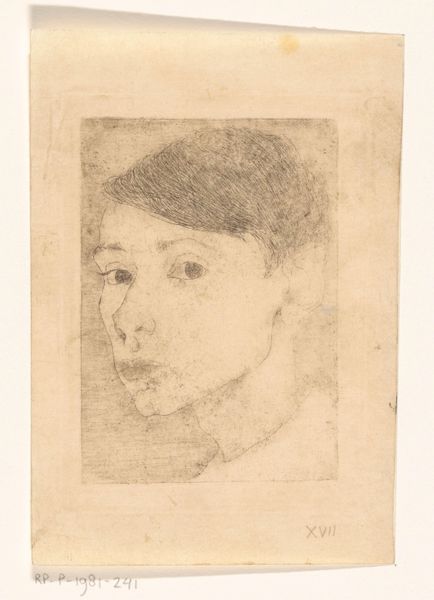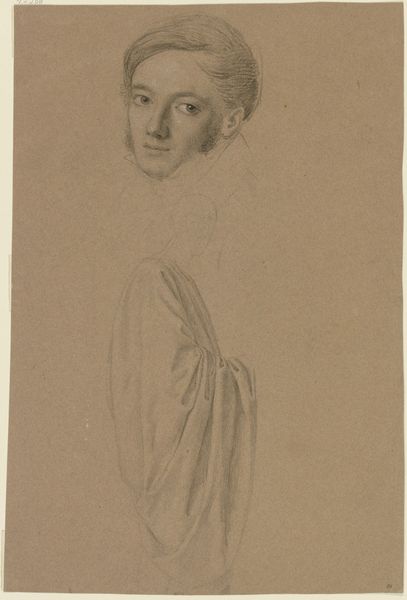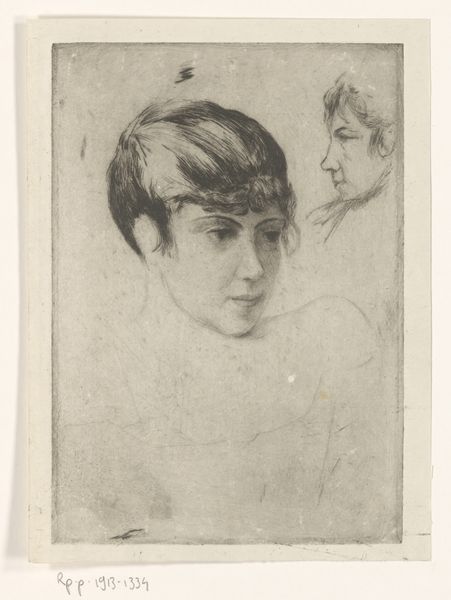
drawing, pencil
#
portrait
#
pencil drawn
#
drawing
#
toned paper
#
light pencil work
#
dutch-golden-age
#
pencil sketch
#
figuration
#
personal sketchbook
#
pencil drawing
#
ink drawing experimentation
#
pencil
#
sketchbook drawing
#
portrait drawing
#
pencil work
#
realism
Dimensions: height 294 mm, width 198 mm
Copyright: Rijks Museum: Open Domain
Editor: Here we have Philip Zilcken’s "Gezicht van een jonge vrouw," a pencil drawing on toned paper created sometime between 1890 and 1930. It's a rather simple portrait, almost a sketch. What can you tell me about this piece? Curator: What strikes me immediately is how the seemingly straightforward portrayal of this young woman masks a potential dialogue about representation itself. The use of pencil, the ‘unfinished’ quality… these choices can be read as resisting the idealized images of women so prevalent during that period. Consider how mass media and traditional art often contribute to a very narrow and, frankly, damaging view of womanhood. Editor: So you’re suggesting the artist is making a conscious effort to avoid idealization? Curator: Precisely! The sketch-like quality undermines a polished, often unrealistic standard of beauty. Also, who was Zilcken? Was he part of an artistic or social circle critiquing societal norms? Perhaps the choice to portray an ‘everyday’ woman, rather than a figure of status, is also significant, decentering traditional hierarchies. Editor: That's a good point. I hadn't really considered that aspect of it. The medium and style themselves become part of the statement. Curator: Absolutely! And, it prompts the question, does this subversion truly impact viewers? To what degree does this quiet act of resistance actually empower either the subject or the audience viewing the drawing? Does it really allow us to see differently? Or does the artwork actually just maintain established social orders and class structures? Editor: Those are important questions to think about. I never considered the art's message extending to its potential impact on women in society. Curator: These drawings were part of a growing shift, though, of modern artists representing women of the every day, instead of highly stylized and often overtly sexual paintings from the era. And now, having looked more closely at the tones and the subject’s attire, how have your initial impressions evolved? Editor: Now I appreciate the nuanced choices, considering what the image communicates in its historical context and if its purpose still matters today.
Comments
No comments
Be the first to comment and join the conversation on the ultimate creative platform.
